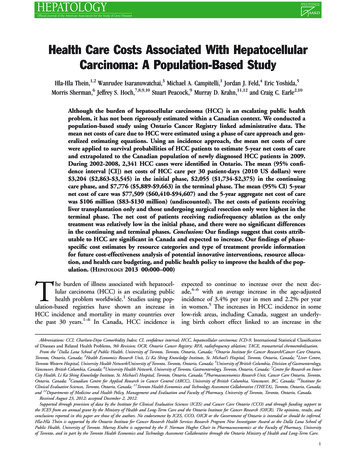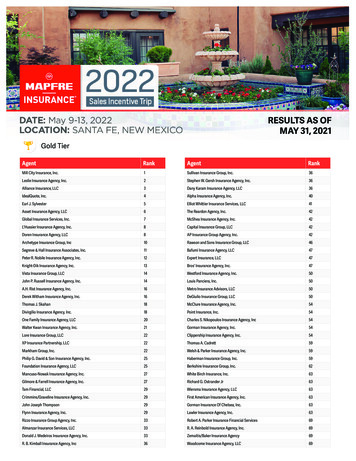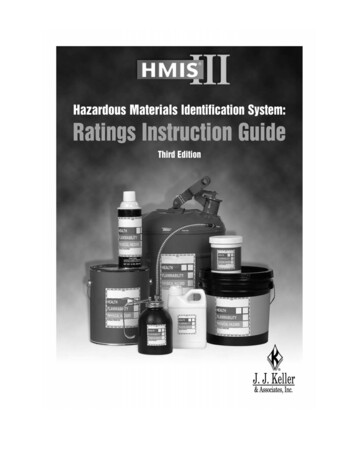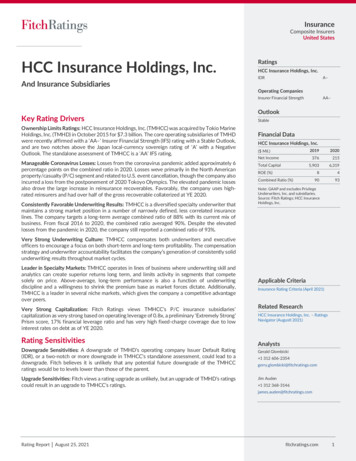
Transcription
InsuranceComposite InsurersUnited StatesHCC Insurance Holdings, Inc.And Insurance SubsidiariesRatingsHCC Insurance Holdings, Inc.IDRA–Operating CompaniesInsurer Financial StrengthKey Rating DriversOwnership Limits Ratings: HCC Insurance Holdings, Inc. (TMHCC) was acquired by Tokio MarineHoldings, Inc. (TMHD) in October 2015 for 7.3 billion. The core operating subsidiaries of TMHDwere recently affirmed with a ‘AA–’ Insurer Financial Strength (IFS) rating with a Stable Outlook,and are two notches above the Japan local-currency sovereign rating of ‘A’ with a NegativeOutlook. The standalone assessment of TMHCC is a ‘AA’ IFS rating.Manageable Coronavirus Losses: Losses from the coronavirus pandemic added approximately 6percentage points on the combined ratio in 2020. Losses weve primarily in the North Americanproperty/casualty (P/C) segment and related to U.S. event cancellation, though the company alsoincurred a loss from the postponement of 2020 Tokoyo Olympics. The elevated pandemic lossesalso drove the large increase in reinsurance recoverables. Favorably, the company uses highrated reinsurers and had over half of the gross recoverable collaterized at YE 2020.Consistently Favorable Underwriting Results: TMHCC is a diversified specialty underwriter thatmaintains a strong market position in a number of narrowly defined, less correlated insurancelines. The company targets a long-term average combined ratio of 88% with its current mix ofbusiness. From fiscal 2016 to 2020, the combined ratio averaged 90%. Despite the elevatedlosses from the pandemic in 2020, the company still reported a combined ratio of 93%.AA–OutlookStableFinancial DataHCC Insurance Holdings, Inc.2019( Mil.)Net IncomeTotal Capital20203762155,9036,319ROE (%)Combined Ratio (%)849093Note: GAAP and excludes PrivilegeUnderwriters, Inc. and subsidiaries.Source: Fitch Ratings; HCC InsuranceHoldings, Inc.Very Strong Underwriting Culture: TMHCC compensates both underwriters and executiveofficers to encourage a focus on both short-term and long-term profitability. The compensationstrategy and underwriter accountability facilitates the company’s generation of consistently solidunderwriting results throughout market cycles.Leader in Specialty Markets: TMHCC operates in lines of business where underwriting skill andanalytics can create superior returns long term, and limits activity in segments that competesolely on price. Above-average, long-term performance is also a function of underwritingdiscipline and a willingness to shrink the premium base as market forces dictate. Additionally,TMHCC is a leader in several niche markets, which gives the company a competitive advantageover peers.Very Strong Capitalization: Fitch Ratings views TMHCC’s P/C insurance subsidiaries’capitalization as very strong based on operating leverage of 0.8x, a preliminary ‘Extremely Strong’Prism score, 17% financial leverage ratio and has very high fixed-charge coverage due to lowinterest rates on debt as of YE 2020.Rating SensitivitiesDowngrade Sensitivities: A downgrade of TMHD’s operating company Issuer Default Rating(IDR), or a two-notch or more downgrade in TMHCC’s standalone assessment, could lead to adowngrade. Fitch believes it is unlikely that any potential future downgrade of the TMHCCratings would be to levels lower than those of the parent.Upgrade Sensitivities: Fitch views a rating upgrade as unlikely, but an upgrade of TMHD’s ratingscould result in an upgrade to TMHCC’s ratings.Applicable CriteriaInsurance Rating Criteria (April 2021)Related ResearchHCC Insurance Holdings, Inc. – RatingsNavigator (Augustl 2021)AnalystsGerald Glombicki 1 312 606-2354gerry.glombicki@fitchratings.comJim Auden 1 312 368-3146james.auden@fitchratings.comRating Report August 25, 2021fitchratings.com1
InsuranceComposite InsurersUnited StatesKey Credit Factors — Scoring SummaryOperational ProfileFactorLevelsIndustry Profile &OperatingEnvironmentBusiness ProfileFinancial ProfileCapitalization &LeverageDebt ServiceCapabilities andFinancialFlexibilityFinancialPerformance &EarningsInvestment andLiquidity RiskAsset/LiabilityManagementReserveAdequacyOther Factors &Reinsurance, RiskCriteria ElementsMitigation &(see below)Catastrophe RiskaaaInsurer FinancialStrengthAAAStableaa Credit FactorAA StableaaNot ApplicableAAStableaa-AA-Stablea A StableaAStablea-A-Stablebbb BBB StablebbbBBBStablebbb-BBB-Stablebb BB StablebbBBStablebb-BB-Stableb B StablebBStableb-B-Stableccc CCC StablecccCCCStableccc-CCC-StableccCCStablecCd or rdD or RDBar Chart LegendOther Factors & Criteria ElementsProvisional Insurer Financial StrengthNon-Insurance AttributesAAPositiveNeutralNegative 0EffectiveSome WeaknessIneffective 0PositiveNeutralNegative-1YesNoAAA 0Vertical Bars Range of Rating FactorBar Colors Relative ImportanceHigher InfluenceCorporate Governance & ManagementOwnership / Group SupportTransfer & Convertibility / Country CeilingInsurer Financial Strength (IFS)IFS Recovery AssumptionIssuer Default Rating (IDR)Final:AA-Final:n.a.GoodLower InfluenceBar Arrows Rating Factor Outlook PositiveEvolving NegativeStable-1Latest Developments Moderate InfluenceFitch made no changes to TMHCC’s rating and subfactors scores from prior-yearanalaysis.Peer ComparisonClick here for a report that shows acomparative peer analysis of key creditfactor scoring.Industry Profile and OperatingEnvironment (IPOE)Click here for a link to a report thatsummarizes the main factors drivingthe above IPOE score.HCC Insurance Holdings, Inc.Rating Report August 25, 2021fitchratings.com2
InsuranceComposite InsurersUnited StatesBusiness ProfileFavorable ProfileTMHCC is a stock company that is 100% owned by TMHD, which is based in Japan and has abusiness profile score of ‘aa ’ by Fitch. TMHD has actively acquired several other U.S.-basedinsurers over time, including: Delphi Financial Group (2012) and Philadelphia InsuranceCompanies (2008). Approximately 36% of TMHD’s operations at YE 2020 were from outside ofJapan. TMHCC’s operations are managed separately from other TMHD U.S. operations, but thereare various levels of collaboration and shared services among subsidiaries.TMHCC’s primary product offerings include agriculture, aviation, property, energy, marine,directors and officers liability, professional liability, surety, credit and other specialty risks thatare lowly correlated. Additionally, the company is a market leader in medical stop-loss coverage.The company divides its operations into three key segments: North America Property & Casualty,Accident & Health and International.Favorable Competitive PositioningCompetitive positioning is comprised of two subfactors: general and operating scale. Togetherthese factors aggregate into a favorable position. TMHCC has a leading business franchise withinthe sector and strong competitive advantages that are partly derived from its franchise. As of YE2020, the company reported net written premiums of 4.0 billion and shareholders’ equity of 5.2 billion.Favorable Risk ProfileTMHCC’s risk appetite is lower than the sector as a whole and focuses on stable and establishedlines of business. In particular, the company’s expertise as a specialty writer is to obtain adequaterate for the risk that is underwritten. By direct premiums, the largest P/C line of businessunderwritten is crop insurance.Ownership Is Negative to the RatingTMHCC is a specialty insurance group formed in 1974, based in Houston and acquired by TMHDin October 2015 for 7.3 billion. Fitch’s standalone rating of TMHCC is one notch higher thancurrent ratings as ownership reduces the ratings by one notch.HCC Insurance Holdings, Inc.Rating Report August 25, 2021fitchratings.com3
InsuranceComposite InsurersUnited StatesCapitalization and LeverageVery Strong CapitalizationFitch views TMHCC’s capital to be very strong and supportive of the current rating category.Overall capital adequacy has a moderate influence in determining the company’s ratings.Fitch evaluates capital on both a nonrisk-adjusted basis, such as operating and net leverage, anda risk-adjusted basis, such as RBC and Fitch’s Prism capital model, to gain a more comprehensiveview of capital. From a nonrisk-adjusted perspective, TMHCC’s metrics are slightly favorablerelative to the rating category and peer-rated companies.Life RBC continues to grow from the decline in 2017 due to the acquisition of AmericanInternational Group, Inc.’s (AIG) medical stop-loss operations. Since the P/C company owns thelife company, the P/C company’s decline in RBC was related to ownership of the life subsidiary.Fitch expects RBC growth to be more modest going forward.Fitch believes TMHCC’s financial leverage will approximate the 20% range over the near tointermediate term. TMHCC retired all existing public debt in 2015. The company’s current debtstructure comprises two debt facilities: a bank term loan and borrowings under a revolving creditfacility.Financial Highlights201920205,9036,319Financial Leverage Ratio (%)1617Net Premiums Written/Equity (x)0.70.8Net Leverage (x)1.82.1P/C RBC Ratio (%)239195Life RBC Ratio (%)212220Total Capital ( Mil.)P/C – Property/casualty. Note: RBC ratio iscalculated at company action level for leadoperating subsidiary and is based on statutoryaccounting. Financial leverage ratio excludesFAS 115. GAAP accounting principles.Source: Fitch Ratings; HCC InsuranceHoldings, Inc.Fitch Expectations Capitalization is expected to remain solid, with operating and net leverage near currentlevels. Financial leverage is expected to remain at or below 20%.2020 Preliminary Prism Score — HCC Insurance Holdings GroupTarget CapitalAvailable Capital( Mil.)( Mil.)Prism Score4,000AC/TC at Prism Score (%)3,500AC/TC atHigher Prism Score (%)201820192020aVery Extremely 43,4543,624———3,000Statutory Surplus2,500Affiliated Investments2,000Unrealized Bond Gains/(Losses)1,500Other rophe151917Other192123Available Capital (AC Base)1,0005000Target CapitalContributors (%)a2020 results are prelinary. AC – Available capital. TC – Target capital. Note: Red line is AC base; shaded arearepresents the high and low of AC due primarily to unrealized bond gains and the affiliated capital.Source: Fitch Ratings, S&P Global Market Intelligence.HCC Insurance Holdings, Inc.Rating Report August 25, 2021fitchratings.com4
InsuranceComposite InsurersUnited StatesDebt Service Capabilities and Financial FlexibilityVery Strong Financial Flexibility and Debt-Servicing CapabilitiesFitch views TMHCC’s financial flexibility and debt service capabilities to be very strong andsupportive of the current rating category. Overall, this factor has a lower influence in determiningthe company’s ratings.Due to the company’s strong profitability, moderate financial leverage and low interest expense,fixed-charge coverage is anticipated to remain near current levels over the near to intermediateterm. The interest rate on the company’s term loan is now fixed instead of floating. This waschanged when the company refinanced in 2020, extending the duration to March 2027.For purposes of the statutory fixed-charge coverage ratio, Fitch used the maximum dividend theU.S. subsidiaries could send to the holding company without regulatory approval, which was 226 million in 2020. Fitch notes that the company has additional liquidity sources outside of theU.S., but the bulk of revenues and profits are derived within the U.S.Financial Highlights20192020Interest Expense ( Mil.)2920GAAP Fixed-ChargeCoverage (x)1716Note: GAAP.Source: Fitch Ratings; HCC InsuranceHoldings, Inc.Fitch Expectations Coverage ratios will fluctuate between the high-single-digit to low-double-digit rangeover the near term depending on the floating interest rate on the debt.Financial Performance and EarningsVery Strong ProfitabilityFitch views TMHCC’s financial performance and earnings to be very strong and supportive of thecurrent rating category. Overall profitability has a high influence in determining the company’sratings.TMHCC Debt Outstanding( Mil., as of Dec 31, 2020)Bank Term Loan475Revolving Credit Facility600Source: Fitch Ratings; HCC InsuranceHoldings, Inc.TMHCC’s underwriting performance is a hallmark of the rating. Unique expertise in specialty lineshas led to consistently strong operating results, evidenced by very strong yoy combined ratioswith minimal deviations.The company’s management and underwriters are compensated with an emphasis on deliveringvery strong bottom-line results over top-line growth. In fact, the company actively reduceswritings in lines of business that are too competitive to sustain a strong underwriting margin atthe expense of maintaining market share or top-line growth.Approximately, 14% of TMHCC’s net written premiums are related to crop insurance. Due toadverse commodity prices, lost business and reduction in renewal premium, 2020 was a difficultyear for crop insurance, but TMHCC, through a tangible demonstration of its risk analysis, wasstill able to produce profitable results on a consolidated basis.Fitch Expectations Calendar-year combined ratio will approximate 90% over the near term. Premiums will continue to increase over the rating horizon.HCC Insurance Holdings, Inc.Rating Report August 25, 2021Financial Highlights( Mil.)20192020Premiums Earned3,5183,809Pretax Operating Income456456Net Income3762968.01.0Combined Ratio (%)89.893.3Operating Ratio (%)82.687.1ROE (%)Note: GAAP accounting principles. Operatingincome excludes investment gains/(losses).Source: Fitch Ratings; HCC InsuranceHoldings, Inc.fitchratings.com5
InsuranceComposite InsurersUnited StatesInvestment and LiquidityHigh-Quality Investment PortfolioFitch views TMHCC’s investment and liquidity to be very strong and supportive of the currentrating category. Overall investments and liquidity have a lower influence in determining thecompany’s current ratings.TMHCC maintains high-quality, fixed-income securities with a ‘AA–’ average credit rating and amodest 3% allocation to below-investment-grade bonds. The duration of its fixed-incomeportfolio is 4.9 years. Fitch believes that TMHCC’s liquidity remains adequate to pay claims.TMHD purchased Delphi Financial Group, Inc. in 2012 for approximately 2.7 billion. Delphi hasunique investment management expertise, particularly in longer duration assets. Delphi’sinvestment management organization oversees a portion of TMHCC’s risk asset portfolios.TMHCC’s investment strategy of allocating approximately 15% of assets into risk assets isunlikely to change from this shift in management, but the composition of these assets will differover time.Financial HighlightsTotal Invested Assets( Mil.)Invested Assets/Common Equity (x)201920208,0879,0251.61.7Risky Assets/Equity (%)56Investment Yield (%)33( Mil.)20192020Loss and LAE Reserves2,978 3,509Note: GAAP.Source: Fitch Ratings; HCC InsuranceHoldings, Inc.Fitch Expectations The risky asset ratio to approximate current levels. Investment leverage to remain relatively consistent yoy.Reserve AdequacyReserve Position Is StrongTMHCC’s reserve adequacy is strong and supportive of the current rating category. Overallreserve adequacy has a moderate influence in determining the company’s ratings.In 2020, the company reported a modest amount of adverse reserve development primarilyrelated to casualty lines in North America P/C, partially offset by favorable development inmedical stop-loss. In the past 10 calendar years, reserves developed favorably eight times. Thecompany also has low reserve leverage, which leads to limited capital exposure. The companydemonstrates conservatism when estimating reserves, and continues to take prompt andsufficient measures when claims diverge from initial estimates.TMHCC historically reported modest reserve volatility, as longer tail professional liability andcasualty lines were offset by shorter tail accident and health and surety lines. The company’sweighted-average duration of all claims was approximately 2.5 years in 2020 and approximatedthis level for several years.TMHCC consistently reports consolidated net reserves above its actuarial point estimate, butwithin the actuarial range.Fitch Expectations Reserving philosophy will remain conservative. Calendar-year reserve development is expected to be neutral to favorable over the nearterm. No material changes in reserve leverage.HCC Insurance Holdings, Inc.Rating Report August 25, 2021Financial HighlightsPAY Reserve Development(9)36PAY Reserve Development/NPE (x)(0.3)0.9PAY Reserve Development/BOY Common Equity (x)(0.2)0.70.60.7Net Reserves/Common EquityLAE – Loss adjustment expense. PAY Prioraccident year. NPE Net premiums earned.BOY Beginning of year. Note: GAAPaccounting principles.Source: Fitch Ratings; HCC InsuranceHoldings, Inc.fitchratings.com6
InsuranceComposite InsurersUnited StatesReinsurance, Risk Mitigation and Catastrophe ManagementReasonable Reinsurance Protection Limits Large LossesFitch views TMHCC’s reinsurance, risk mitigation and catastrophe risk to be very strong andsupportive of the current rating category. Overall, this category has a lower influence indetermining the company’s ratings.TMHCC continues to purchase significant reinsurance to protect against catastrophe losses. Thecompany also uses a fair amount of proportional reinsurance to more effectively manage risk innew lines of business. Reinsurance recoverables at YE 2020 increased considerably from theprior year, primarily due to the use of reinsurance for pandemic-related claims. Favorably, thecompany had over half of the outstanding recoverable balance collatoralized as of YE 2020. Thecompany uses a panel of highly rated reinsurers to help offset any financial strength concerns.Also, the reinsurance recoverable balance declined 300 million thus far in 2021.Financial Highlights20192020Reinsurance Recoverables(RR, Bil.)1.83.3RR/Shareholders’ Equity (%)3663Retention Ratio (%)7473Note: GAAPSource: Fitch Ratings; HCC Insurance Holdings,Inc. fillings.Fitch views TMHCC’s risk management process as effective and notes the company has a historyof favorable long-term underwriting performance. The company also built an economic capitalmodel, which allows it to better assess risks associated with capital management decisions.Fitch Expectations No major changes to TMHCC’s reinsurance and risk mitigation over the ratings horizon. The retention ratio is expected to stay in the 70% range over the near term. Reinsurance recoverables will drift down towards longer term average over the ratinghorizon.HCC Insurance Holdings, Inc.Rating Report August 25, 2021fitchratings.com7
InsuranceComposite InsurersUnited StatesAppendix A: Other Ratings ConsiderationsBelow is a summary of additional ratings considerations that are part of Fitch’s ratings criteria.Group IFS Rating ApproachComplete Ratings Listfor Core SubsidiariesFitch considers TMHCC’s insurance subsidiaries (listed in the table to the right) as Coreoperations. HCC Life Insurance Co. is owned by Houston Casualty Co. and writes predominatelymedical stop-loss business. These entities share common management, resources and branding.Only normal regulatory barriers exist to dividend movement between entities and the parent.Houston Casualty Co.NotchingUnited States Surety Co.For notching purposes, the regulatory environment of the U.S. is assessed by Fitch as beingEffective and classified as following a Ring-Fencing approach.HCC Life Insurance Co.Avemco Insurance Co.U.S. Specialty Insurance Co.American Contractors Indemnity Co.Insurer Financial StrengthAA–Notching SummaryIFS RatingsA baseline recovery assumption of Good applies to the IFS rating, and standard notching was usedfrom the IFS “anchor” rating to the implied operating company IDR.Holding Company IDRStandard notching was applied between the implied operating company and holding company IDRs,with no adjustments made for unusual leverage, coverage or diversification of cash flow.IFS – Insurer Financial Strength. IDR – Issuer Default Rating.Short-Term RatingsNot applicable.Hybrid — Equity/Debt TreatmentNo hybrid debt exists at TMHCC currently.Corporate Governance and ManagementCorporate governance and management are adequate and neutral to the rating. No materialissues to the rating are noted. The board appears to have an appropriate amount of independencefrom management and seems reasonably involved in establishing the company’s strategicdirection. There appear to be no major audit-related issues or related-party transactions.Transfer and Convertibility Risk (Country Ceiling)None.Criteria VariationsNone.HCC Insurance Holdings, Inc.Rating Report August 25, 2021fitchratings.com8
InsuranceComposite InsurersUnited StatesAppendix B: Environmental, Social and Governance ConsiderationsInsurance Ratings NavigatorHCC Insurance Holdings, Inc.US Non-LifeCredit-Relevant ESG DerivationOverall ESG ScaleHCC Insurance Holdings, Inc. has 7 ESG potential rating drivers HCC Insurance Holdings, Inc. has exposure to underwriting/reserving exposed to environmental and natural catastrophe risks; impact of catastrophes on own operations or asset quality; credit concentrationsbut this has very low impact on the rating.HCC Insurance Holdings, Inc. has exposure to compliance risk; treating customers fairly; pricing transparency; privacy/data security; legal/regulatory fines; exposure to insured and own cyber risk but this hasvery low impact on the rating.HCC Insurance Holdings, Inc. has exposure to social responsibility and its effect on brand strength; increased vulnerability due to credit concentrations but this has very low impact on the rating.key driver0issues5driver0issues4potential driver7issues32issues25issues1Governance is minimally relevant to the rating and is not currently a driver.not a rating driverEnvironmental (E)General IssuesSector-Specific IssuesE ScoreReferenceE ScaleGHG Emissions & Air Quality1n.a.n.a.5Energy Management1n.a.n.a.4Water & WastewaterManagement1n.a.n.a.3Waste & Hazardous MaterialsManagement; EcologicalImpacts2Underwriting/reserving exposed to asbestos/hazardous materials risks3Underwriting/reserving exposed to environmental and natural catastropherisks; impact of catastrophes on own operations or asset quality; creditconcentrationsExposure to EnvironmentalImpactsCapitalization & Leverage; Financial Performance &Earnings; Reserve Adequacy; Reinsurance, Risk Mitigation &Catastrophe RiskCapitalization & Leverage; Financial Performance &Earnings; Reserve Adequacy; Reinsurance, Risk Mitigation &Catastrophe Risk; Investment & Asset RiskHow to Read This PageESG scores range from 1 to 5 based on a 15-level color gradation. Red (5) is mostrelevant and green (1) is least relevant.The Environmental (E), Social (S) and Governance (G) tables break out theindividual components of the scale. The right-hand box shows the aggregate E, S, or Gscore. General Issues are relevant across all markets with Sector-Specific Issuesunique to a particular industry group. Scores are assigned to each sector-specific issue.These scores signify the credit-relevance of the sector-specific issues to the issuingentity's overall credit rating. The Reference box highlights the factor(s) within which thecorresponding ESG issues are captured in Fitch's credit analysis.21Social (S)General IssuesHuman Rights, CommunityRelations, Access &AffordabilityCustomer Welfare - FairMessaging, Privacy & DataSecuritySector-Specific IssuesS ScoreReferenceS Scale1n.a.n.a.53Compliance risk; treating customers fairly; pricing transparency;privacy/data security; legal/regulatory fines; exposure to insured and owncyber riskIndustry Profile & Operating Environment; Business Profile;Reserve Adequacy4Labor Relations & Practices2Impact of labor negotiations, including board/employee compensation andcompositionCorporate Governance & Management3Employee Wellbeing1n.a.n.a.2Exposure to Social Impacts3Business Profile; Investment & Asset Risk; FinancialSocial responsibility and its effect on brand strength; increased vulnerabilityPerformance & Earnings; Reinsurance, Risk Mitigation &due to credit concentrationsCatastrophe RiskThe Credit-Relevant ESG Derivation table shows the overall ESG score. This scoresignifies the credit relevance of combined E, S and G issues to the entity's credit rating.The three columns to the left of the overall ESG score summarize the issuing entity'ssub-component ESG scores. The box on the far left identifies some of the main ESGissues that are drivers or potential drivers of the issuing entity's credit rating(corresponding with scores of 3, 4 or 5) and provides a brief explanation for the score.Classification of ESG issues has been developed from Fitch's sector ratings criteria.The General Issues and Sector-Specific Issues draw on the classification standardspublished by the United Nations Principles for Responsible Investing (PRI) and theSustainability Accounting Standards Board (SASB).Sector references in the scale definitions below refer to Sector as displayed in theSector Details box on page 1 of the navigator.1CREDIT-RELEVANT ESG SCALEGovernance (G)General IssuesSector-Specific IssuesG ScoreReferenceG ScaleHow relevant are E, S and G issues to the overall credit rating?Management Strategy3Operational implementation of strategyCorporate Governance & Management; Business Profile55Highly relevant, a key rating driver that has a significant impact on the rating on anindividual basis. Equivalent to "higher" relative importance within Navigator.Governance Structure3Board independence and effectiveness; ownership concentration;protection of creditor/stakeholder rights; legal /compliance risks; businesscontinuity; key person risk; related party transactionsCorporate Governance & Management44Relevant to rating, not a key rating driver but has an impact on the rating incombination with other factors. Equivalent to "moderate" relative importance withinNavigator.Group Structure3Organizational structure; appropriateness relative to business model;opacity; intra-group dynamics; ownershipCorporate Governance & Management; Ownership33Minimally relevant to rating, either very low impact or actively managed in a way thatresults in no impact on the entity rating. Equivalent to "lower" relative importancewithin Navigator.Financial Transparency3Quality and timing of financial reporting and auditing processesCorporate Governance & Management22Irrelevant to the entity rating but relevant to the sector.11Irrelevant to the entity rating and irrelevant to the sector.ESG ConsiderationsUnless otherwise disclosed in this section, the highest level of ESG credit relevance is a scoreof ‘3’. ESG issues are credit neutral or have only a minimal credit impact on the entity, eitherdue to their nature or the way in which they are being managed by the entity. For moreinformation on Fitch’s ESG Relevance Scores, visit www.fitchratings.com/esg.HCC Insurance Holdings, Inc.Rating Report August 25, 2021fitchratings.com9
InsuranceComposite InsurersUnited StatesThe ratings above were solicited and assigned or maintained at the request of the ratedentity/issuer or a related third party. Any exceptions follow below.ALL FITCH CREDIT RATINGS ARE SUBJECT TO CERTAIN LIMITATIONS AND DISCLAIMERS. PLEASE READ THESE LIMITATIONS ANDDISCLAIMERS BY FOLLOWING THIS LINK: S. IN ADDITION, RATINGDEFINITIONS AND THE TERMS OF USE OF SUCH RATINGS ARE AVAILABLE ON THE AGENCY'S PUBLIC WEB SITE ATWWW.FITCHRATINGS.COM. PUBLISHED RATINGS, CRITERIA, AND METHODOLOGIES ARE AVAILABLE FROM THIS SITE AT ALL TIMES.FITCH'S CODE OF CONDUCT, CONFIDENTIALITY, CONFLICTS OF INTEREST, AFFILIATE FIREWALL, COMPLIANCE, AND OTHER RELEVANTPOLICIES AND PROCEDURES ARE ALSO AVAILABLE FROM THE CODE OF CONDUCT SECTION OF THIS SITE. FITCH MAY HAVE PROVIDEDANOTHER PERMISSIBLE SERVICE TO THE RATED ENTITY OR ITS RELATED THIRD PARTIES. DETAILS OF THIS SERVICE FOR WHICH THELEAD ANALYST IS BASED IN AN ESMA- OR FCA-REGISTERED FITCH RATINGS COMPANY (OR BRANCH OF SUCH A COMPANY) CAN BEFOUND ON THE ENTITY SUMMARY PAGE FOR THIS ISSUER ON THE FITCH RATINGS WEBSITE.Copyright 2021 by Fitch Ratings, Inc., Fitch Ratings Ltd. and its subsidiaries. 33 Whitehall Street, NY, NY 10004. Telephone: 1-800-753-4824,(212) 908-0500. Fax: (212) 480-4435. Reproduction or retransmission in whole or in part is prohibited except by permission. All rights reserved. Inissuing and maintaining its ratings and in making other reports (including forecast information), Fitch relies on factual information it receives fromissuers and underwriters and from other sources Fitch believes to be credible. Fitch conducts a reasonable investigation of the factual informationrelied upon by it in accordance with its ratings methodology, and obtains reasonable verification of that information from independent sources, tothe extent such sources are available for a given security or in a given jurisdiction. The manner of Fitch’s factual investigation and the scope of thethird-party verification it obtains will vary depending on the nature of the rated security and its issuer, the requirements and practices in thejurisdiction in which the rated security is offered and sold and/or the issuer is located, the availability and nature of relevant public information,access to the management of the issuer and its advisers, the availability of pre-existing third-party verifications such as audit reports, agreed-uponprocedures letters, appraisals, actuarial reports, engineering reports, legal opinions and other reports provided by third parties, the availability ofindependent and competent third-party verification sources with respect to the particular security or in the particular jurisdiction of the issuer, anda variety of other factors. Users of Fitch’s ratings and reports should underst
HCC Insurance Holdings, Inc. Rating Report August 25, 2021 fitchratings.com 3 Insurance Composite Insurers United States Business Profile Favorable Profile TMHCC is a stock company that is 100% owned by TMHD, which is based in Japan and has a business profile score of 'aa ' by Fitch. TMHD has actively acquired several other U.S.-based
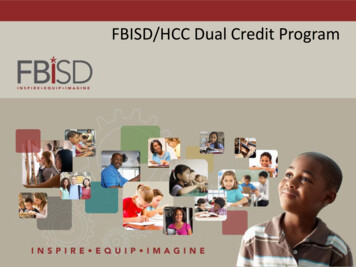

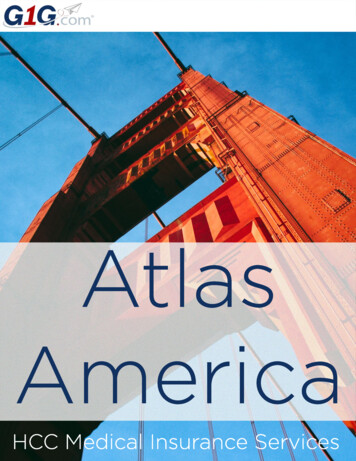
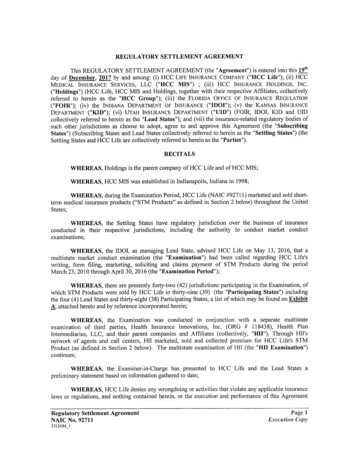
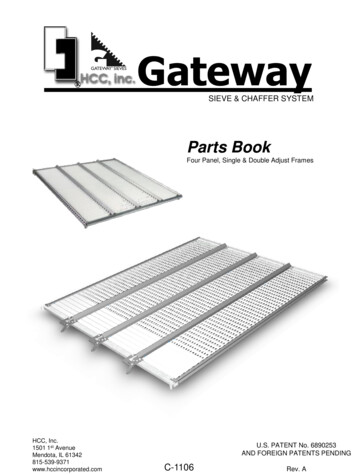
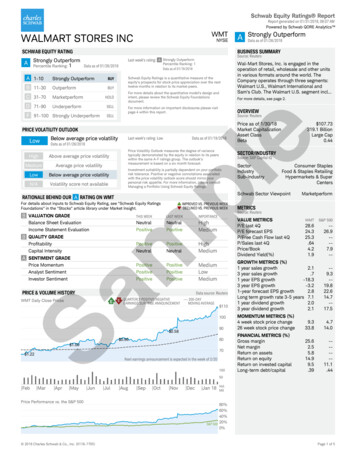
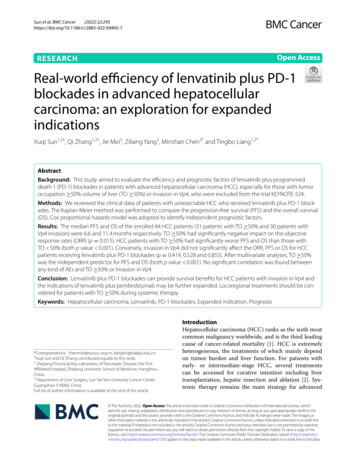
![2020-21 Florida's Optional Innovative Reopening Plan [Hillsborough County]](/img/27/hillsborough-reopenplan.jpg)
